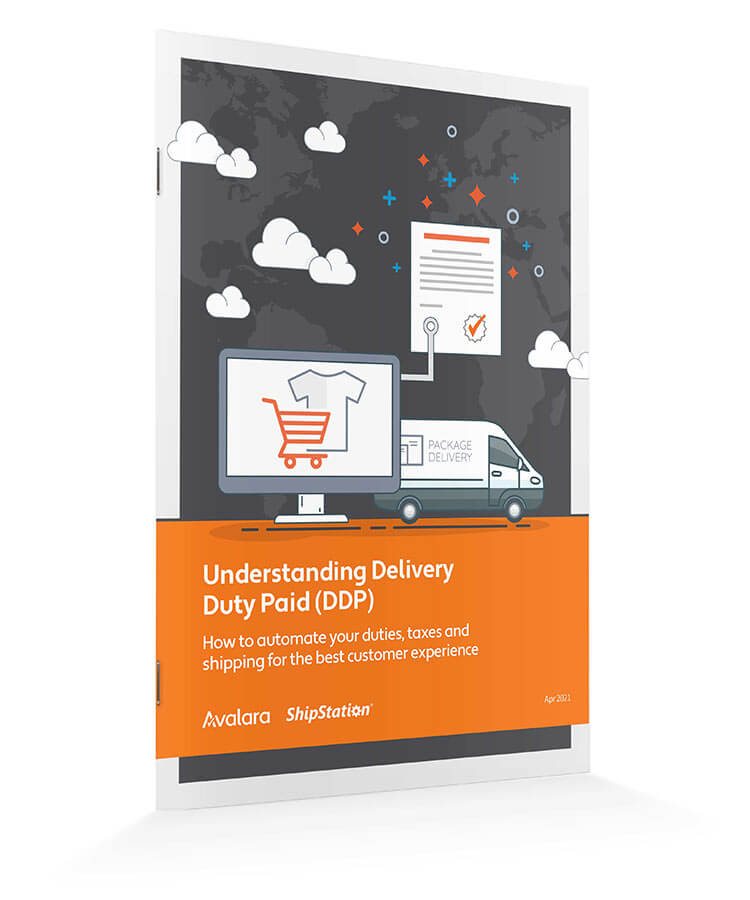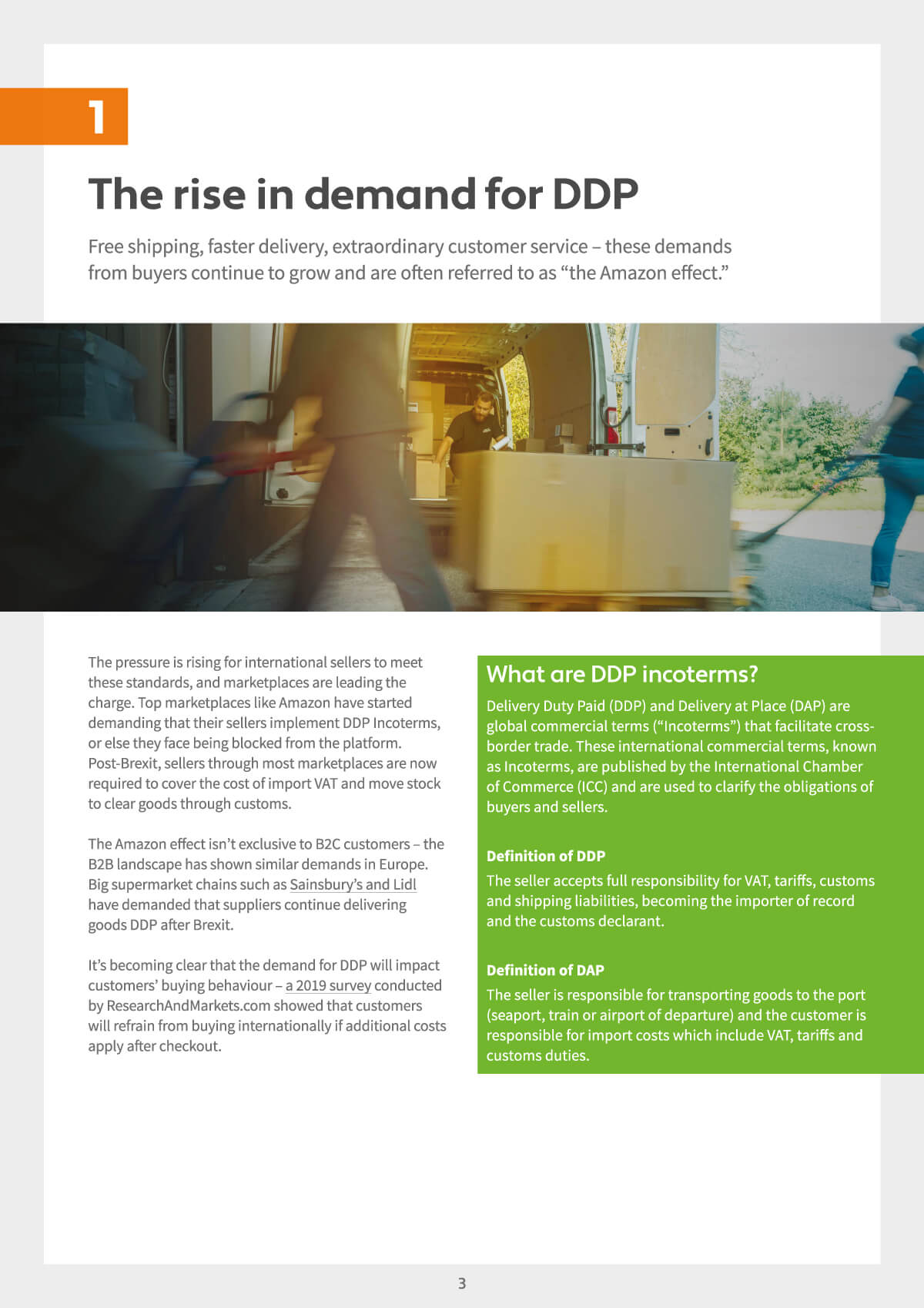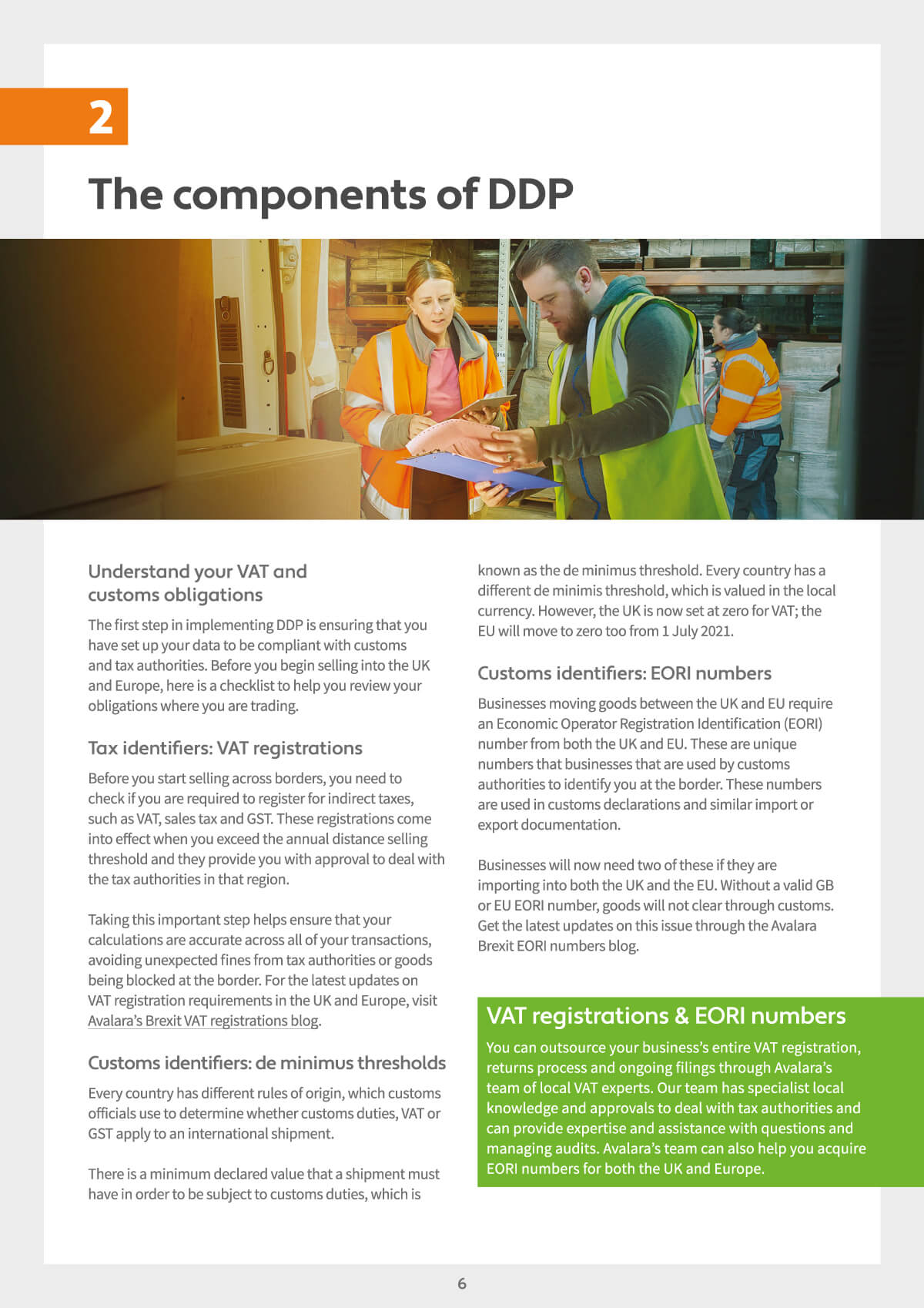Understanding Delivery Duty Paid (DDP)
Automate your duties, taxes and shipping for the best customer experience

Provide the best customer experience when selling internationally
Avalara and technology partner Shipstation bring you a guide to help understand the benefits of DDP and automation for a smooth flow of goods across borders.
We cover:
Understand how DDP provides a better customer experience
Part 1: The rise in demand for DDP
Free shipping, faster delivery and extraordinary customer service! Buyers’ expectations continue to grow and with it the pressure for international sellers to meet these standards.
What’s the difference between Delivery Duty Paid (DDP) and Delivery at Place (DAP)?
Take a closer look at how these options affect your customers and the risks associated with moving your goods across borders.
Part 2: The components of DDP
What business rules and processes do you need, in order to implement DDP?
It starts with understanding your VAT and customs obligations. 2021 has seen a wave of new legislation affecting sellers trading into the UK and the EU, due to Brexit and the latest VAT reforms (IOSS & OSS).
Learn about the key elements for implementing DDP, including VAT registrations, EORI numbers, commodity codes (HS codes) and customs declarations.
Part 3: How to implement DDP
Automation can help to reduce the barriers to entering new markets for your business.
Discover how the Avalara and Shipstation platforms can enable you to automate duties, taxes and shipping within your checkout experience – dramatically reducing your risk of additional taxes, fines and delayed deliveries.
Download the guide
Please note that your data will be shared with Shipstation who is participating in this guide.
For full details of Avalara's privacy policy, click here.


